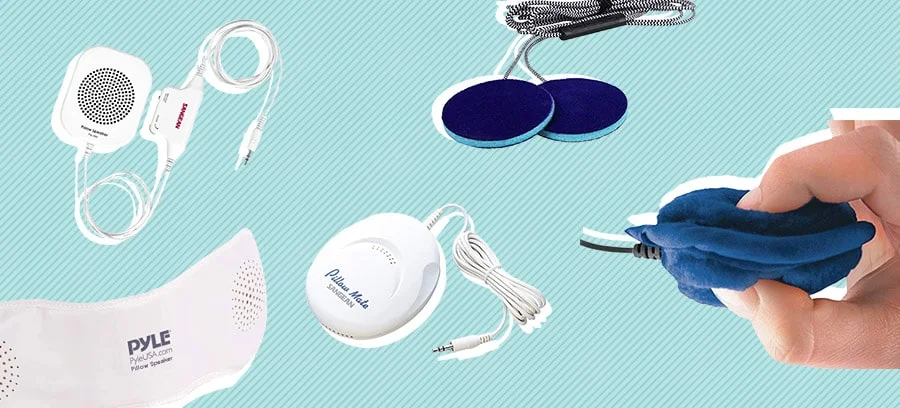Falling asleep, even when in the presence of others, is a very personal experience. Whether people enjoy relaxing to music or podcasts during their last minutes of the day or simply need some audio to act as white noise to help distract them, pillow speakers are a way for someone to fall asleep and not disturb others.
These speakers need to not only be unobtrusive but have sound that can only reach the intended ears. As in the fable Princess and the Pea, some are more sensitive to others to things underneath them as they slumber. We’ve examined some of the more popular pillow speakers to see how they work. Here is what we discovered:

[wpcd_coupons_loop count=5 cat=’1252′ temp=’tabledata’]
How We Picked
Pillow speakers can be a great way for people to achieve a peaceful night of sleep. They allow personalized listening experiences that won’t disturb anyone else. With different features and variable design choices, manufacturers have created products that may appeal to a wide array of users. These differences can be hard to measure without close inspection; here are the aspects we keyed in on:
Profile
The shape and size of pillow speakers can make the difference in how useful they are for certain sleepers. If they are too thick, rotund, or awkwardly shaped, they may be felt under even multiple pillows. Some sleepers are more sensitive to their physical surroundings when trying to fall asleep and a hard plastic speaker may be problematic.
Certain brands have padding around their particular line of speakers, helping to mitigate their presence under pillows. The wider the surface area of the speakers, the more compact they can be. Dual-sided speakers showcase this feature.
Wires
Most pillow speakers have some sort of wire to help with functionality. Most speakers use an audio cord to connect to the audio source, typically a 3.5 mm jack. Bluetooth connectivity is great for those wanting to avoid having a wire emanating from their beds at night. Products with audio memory storage can avoid wires as well.
Some speakers have remote controls, which are usually attached via wire as well. Other features that may have a positive effect on the sound, like an amplifier, are usually attached via wire as well. This dilemma forces users to choose between more wires and more features.
Sound
The tricky thing about pillow speakers is the fine line between providing quality audio and making too much noise. Pillow speakers that are too loud can keep users awake or even disturb others. When using an amplifier, it can even be temporarily painful to sensitive ears.
Amplifiers can help make pillow speakers louder; some have a low base of sound intensity, so amplifiers are needed to make some types of audio intelligible. Devices that have their own volume control are handy. Otherwise, users can only toggle the volume using the source, which may not be nearby.
Tips
Not sure which pillow speaker is right for you? Before making your decision, take a look at the following helpful tips:
- Are you a light sleeper?
- Some people may enjoy falling asleep to music or an audio book, but once asleep could be bothered by having a wire or hard piece of plastic. These users should get a Bluetooth-enabled or padded speaker.
- Those who are bothered by loud noise should find a speaker that has audio levels that can be finely tuned.
- Do you sleep on your side or back?
- Certain speakers work more efficiently if users are laying on their sides. These speakers direct sound directly into the space next to them.
- Two-sided speakers that are spread out underneath the pillow can spread the sound more evenly but less directly. The same goes for speakers with a more round shape.

























